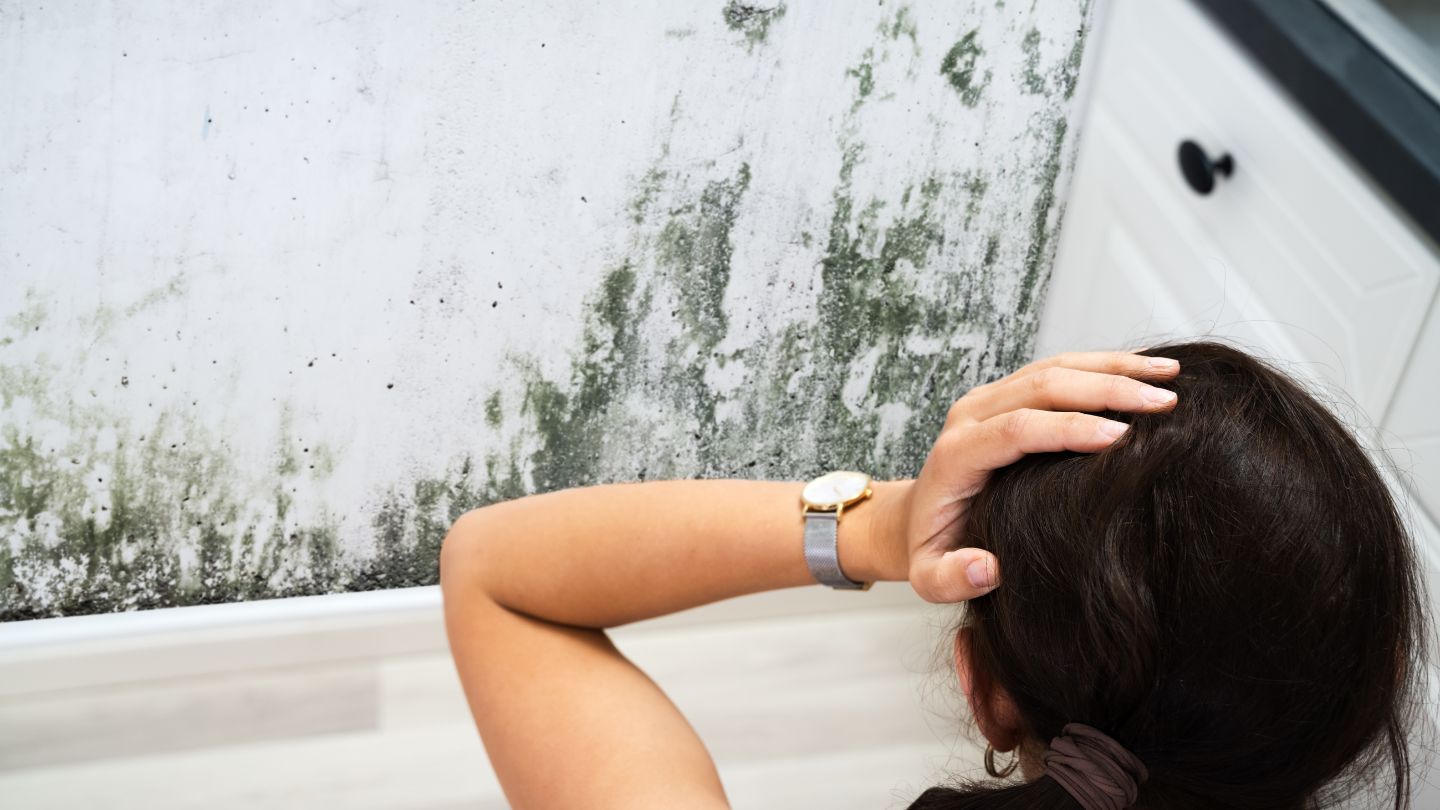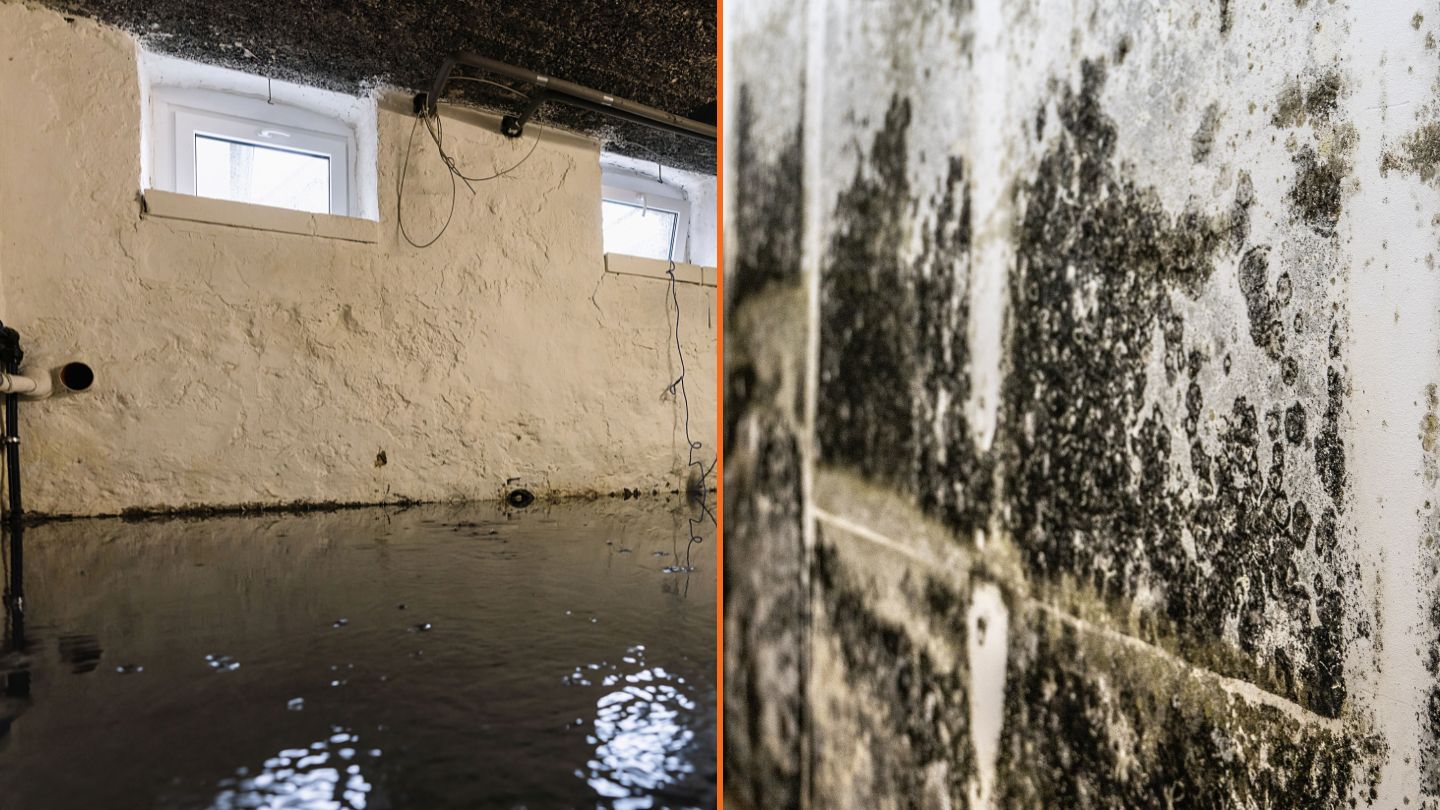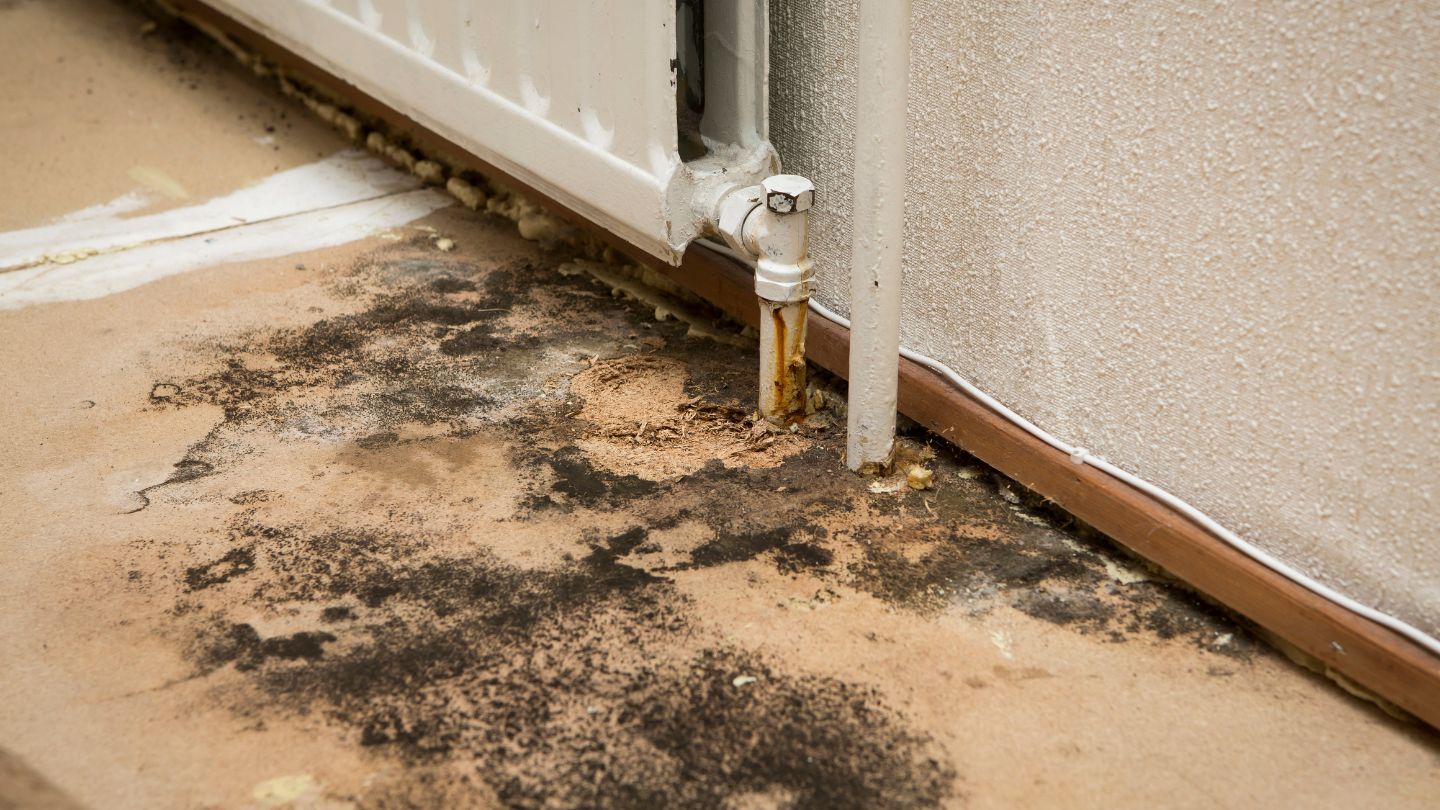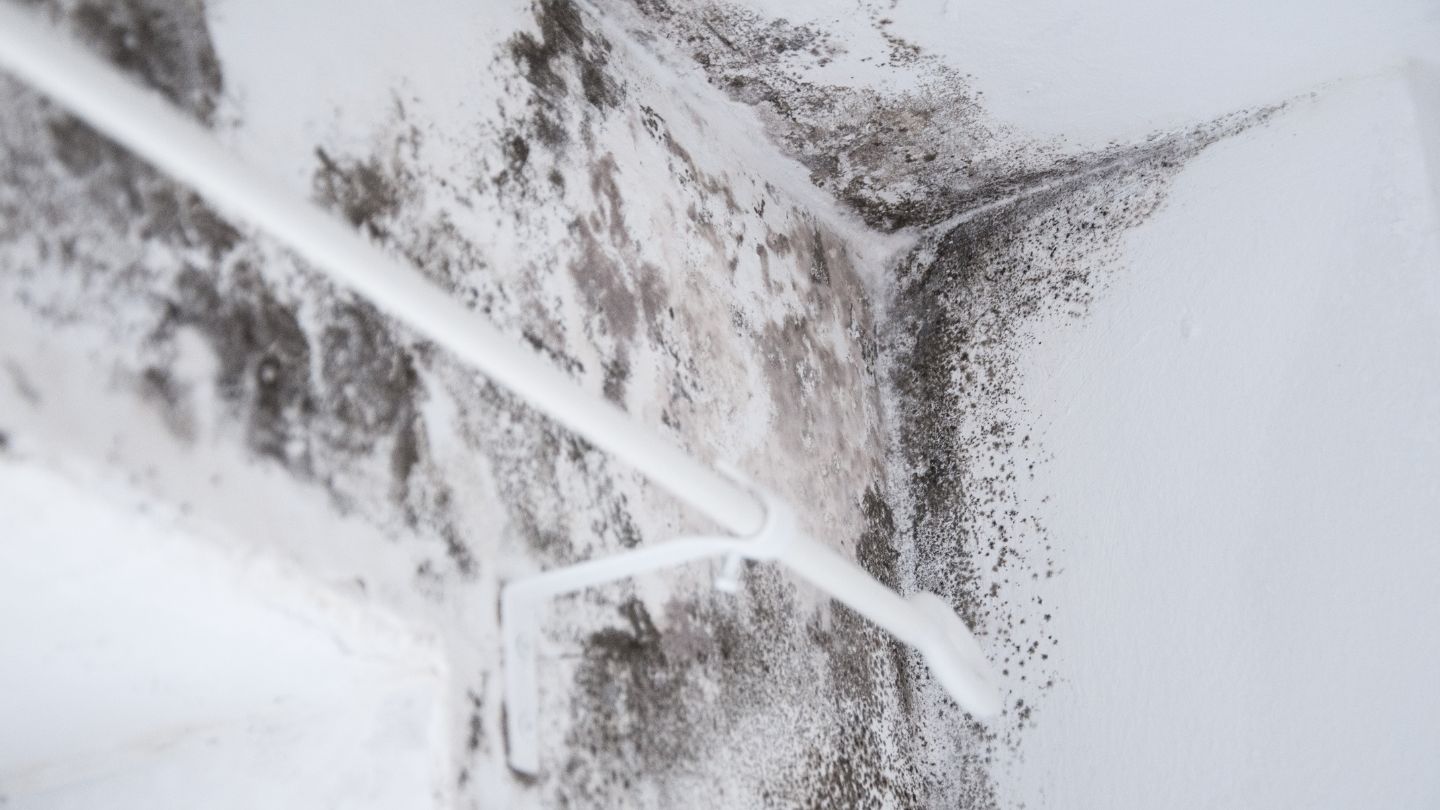Attempting to discern the contrast between mold and water damage: what sets them apart? Water damage denotes any detriment induced by an abundance of moisture, such as that stemming from leaks or flooding incidents. Conversely, mold represents a type of fungus that thrives in moist settings, frequently emerging after instances of water damage. Grasping these differences is essential for safeguarding your residence. This piece aims to guide you in recognizing and addressing each concern with efficiency.
Key Takeaways
- Water damage occurs due to excessive water exposure, leading to immediate structural issues and potential long-term consequences like mold growth.
- Mold thrives in high humidity and moisture-rich environments and can pose serious health risks, necessitating prompt remediation to maintain indoor air quality.
- Effective prevention strategies for both water damage and mold include regular inspections, maintaining proper ventilation, and promptly addressing leaks and moisture issues.
Understanding Water Damage
Damage resulting from excessive water exposure is referred to as water damage. This type of harm can occur due to various situations, such as a burst pipe or a natural calamity, and it has the potential to significantly damage your property. Early detection of water damage is critical for taking swift corrective measures. The primary outcomes may involve weakened structural integrity and moisture in the air condensing on cool surfaces because of inadequate airflow.
Water damage necessitates urgent action, which is evident through immediate indicators such as paint peeling off walls and more enduring impacts like the proliferation of mold.
Common Causes of Water Damage
A variety of factors can lead to water damage, including:
- Intense rainstorms
- Overflows and flood events
- Inferior building quality
- Faulty plumbing systems
Water leaks and substantial water damage can stem from excessive moisture and extended exposure to dampness. Periodic inspections for leaks and maintaining adequate drainage are crucial in averting plumbing disasters such as burst pipes. A noticeable escalation in your water bill may signal an undetected roof leak that would benefit from immediate attention by professionals.
Being aware of these potential causes enables you to safeguard your property against additional harm effectively. Implementing preventative measures like fitting leak detection sensors and securing proper airflow reduces the likelihood of severe damage occurring. Diligent observation combined with swift action at the first sign of a problem is key in preventing extensive water-related destruction and issues with mold growth.
Immediate Effects on Property
Water damage to property typically manifests through clear signs such as wallpaper that’s peeling off, wall surfaces forming bubbles, and the presence of yellow or brownish water stains. The structural integrity of the property may be at risk due to this type of damage, which can cause materials to warp, weaken over time, and possibly result in the collapse of areas impacted by water.
If there is any accumulation of water or persistent moisture in these compromised regions, it can exacerbate decay unless promptly dealt with. Detecting these indicators early allows for quick intervention to reduce harm.
Long-Term Consequences
Failing to address water damage can lead to serious and lasting impacts. Untreated dampness can cause the proliferation of mold and bacteria. Persistent moisture exposure over an extended period can cause substantial deterioration of structural integrity as well as a decline in indoor air quality. Prompt and efficient remediation is crucial for preventing enduring problems and maintaining a healthy living space.
What is Mold?

Mold is a type of fungus that thrives in high-humidity environments. Present almost everywhere, mold can cause significant damage to homes and belongings if left untreated. Microscopic mold spores can deteriorate materials like drywall, wood, and upholstery. Exposure is especially harmful to individuals with allergies, asthma, or compromised immune systems, often triggering respiratory symptoms and skin irritation.
Preventing mold growth after water damage involves quickly drying affected areas and eliminating moisture sources. Certified technicians use industrial drying equipment and moisture meters to ensure complete remediation within the crucial 24–48-hour window, minimizing the risk of mold development.
Mold Growth Conditions
Mold thrives in moisture-rich environments, often growing around leaks or following floods. Excess moisture and high humidity are critical conditions that promote mold growth. Keeping humidity levels below 60% helps prevent mold growth. Proper ventilation in bathrooms and kitchens helps reduce moisture and prevent mold. Excessive moisture and lack of ventilation can create favorable conditions for mold growth on walls.
The likelihood of mold growth depends on the severity of the water damage and the duration of moisture exposure. Moisture, oxygen, and organic materials are required for mold growth to occur after water damage. Effective humidity control preserves a healthy environment and deters mold growth.
Health Risks of Mold Exposure
Exposure to mold is linked with a range of health complications, including respiratory irritation, allergic responses, skin rashes, and eye discomfort. Individuals with pre-existing lung conditions or weakened immune systems are particularly vulnerable. Mold exposure may also lead to recurring sinus infections or exacerbate asthma.
Addressing mold problems promptly with certified remediation professionals is essential. These experts follow strict containment procedures, use HEPA-filtered air scrubbers, and apply antimicrobial treatments to fully eliminate the mold while improving overall indoor air quality.
Types of Mold
There are multiple varieties of mold, each with unique features and potential impacts on health. The following are some prevalent types of mold:
- Stachybotrys chartarum: Commonly known as black mold, this type is notorious for its detrimental health effects.
- Aspergillus: Presenting in several hues, this variety often thrives indoors.
- Penicillium: Found inside homes and buildings, it can display a blue or green tint.
- Cladosporium: Frequently discovered upon moist areas, it may exhibit colors that range from black to green.
The texture of mold colonies might vary significantly. They can be slimy to the touch.
When growing indoors, molds tend to cause irregular staining patterns and come in diverse shades like black, greenish-yellow, or brown. Recognizing various kinds of molds along with their specific appearances is critical for effective identification and removal efforts.
Key Differences Between Water Damage and Mold

Water damage and mold present distinct challenges, each defined by unique conditions and visual cues that distinguish one from the other. Water damage frequently creates an environment conducive to mold growth.
If toxic mold is not addressed promptly, it can aggravate pre-existing health issues and cause significant health complications as well as serious deterioration of structural integrity.
Physical Appearance
If you notice soft or bubbling drywall, it’s a clear sign of moisture intrusion and potential water damage that may require expert help. Mold can appear as fuzzy or slimy patches, while water damage is characterized by stains and distorted surfaces.
Smell
Mold often releases a potent, musty scent that is easy to detect, whereas water damage might not have any discernible odor. Being able to identify these smells, especially those stemming from microbial volatile organic compounds, can aid in detecting mold and prompt necessary measures.
Spread and Localization
Mold can spread rapidly under persistent moisture conditions, potentially affecting various areas of a home where mold grows. A mold problem is generally confined to specific localities, focusing on areas of water infiltration, making it essential to understand mold vs water damage and the risks of mold infestation.
Unlike water damage, which stays localized, mold can take over multiple areas if not effectively managed.
Health Implications
Exposure to mold and water damage can lead to considerable health risks, especially for individuals with respiratory conditions or compromised immune systems. It is vital to swiftly manage issues related to mold and water damage in order to avert lasting health consequences.
Common ailments linked with exposure to mold include respiratory difficulties and allergic responses. Neglecting the treatment of water damage can result in both adverse health effects and structural deterioration of the property.
Health Effects of Water Damage
Water damage indirectly affects health by leading to mold growth, which may cause respiratory symptoms. Water damage itself rarely causes direct health complications, but it can create conditions for potential health risks. Identifying and addressing both water damage and mold issues early is key to protecting health.
Eliminating mold growth as soon as possible minimizes health risks to occupants. Prompt contact with professionals after removing mold and water damage is crucial to prevent further health risks.
Health Risks of Mold
Exposure to mold over an extended period can lead to substantial health complications, including skin irritations and intense allergic reactions. In particular, those who are susceptible may suffer from allergic responses, asthma episodes, and additional respiratory infections due to prolonged exposure. If one encounters respiratory difficulties or similar health problems, it could be indicative of the necessity for expert assistance owing to exposure to mold.
In light of these serious health dangers, it is crucial that any issues with mold are dealt with swiftly and efficiently. Professional services specializing in mold remediation have the capability to eradicate existing colonies of mold and enhance the quality of air indoors, thereby securing a safer living space for residents.
Professional Services for Water Damage and Mold Remediation

It is crucial to engage professional services for efficient handling of water damage and mold remediation in order to guarantee safety and comprehensive treatment. These experts are adept at identifying the origins of both water damage and mold growth, facilitating the creation of successful remediation strategies.
Given the intricate nature involved, seeking professional help is typically considered the most suitable course of action for addressing these issues.
Importance of Professional Water Damage Restoration
Addressing water damage swiftly can prevent the need to discard porous or damaged structural materials. Since mold can remain hidden behind walls and under floors, professional evaluation is essential to identify problem areas before they worsen.
Certified restoration specialists follow IICRC protocols for water extraction, structural drying, and microbial treatment. These methods ensure safe, effective restoration and reduce the likelihood of recurring damage.
Why Hire Professional Mold Remediation Services?
Expert mold remediation guarantees thorough detection, safe removal, and prevention of recurrence. Certified mold professionals conduct detailed inspections using moisture detection tools and air quality tests to uncover hidden growth and its underlying cause.
During mold remediation, technicians utilize commercial-grade HEPA vacuums and negative air machines to remove spores from the air. Rather than relying on basic DIY efforts, professionals implement comprehensive treatment plans, including the application of antimicrobial solutions and the use of dehumidifiers to maintain long-term results.
Cost Considerations
Professional water damage restoration and mold remediation services can incur significant costs, varying based on the extent of damage and required intervention. Insurance claims can often expedite the cost recovery for remediation services.
911 Floods R.E. Us offers financing options to help make the restoration process more accessible and stress-free.
Preventative Measures
To avert mold proliferation and water-related damage, it is vital to engage in preventive actions. Effective approaches include:
- Regular checks of plumbing systems and appliances can detect leaks early on and forestall any resultant water harm.
- Ensuring that drainage systems are well-maintained and gutter cleaning can stave off the buildup of excess water near your home’s base.
- Swiftly addressing leaks in roofs or pipes helps to preclude widespread moisture damage.
Applying these steps will markedly diminish the likelihood of both water impairment and mold infestation within your residence.
Maintaining indoor humidity below 60% plays a critical role in impeding mold development. Installing adequate ventilation mechanisms, particularly in areas prone to high moisture, such as kitchens and bathrooms, aids immensely in curtailing the potential for mold’s emergence.
Tips to Prevent Water Damage
Inadequately constructed drainage systems may cause water to accumulate, leading to its penetration into structures. To prevent water overflow due to blockages, it is crucial that gutters are maintained clean on a regular basis. Professional-grade leak detection systems, installed by restoration experts, can automatically shut off water flow and issue alerts at the first sign of excess moisture.
Restoration technicians use high-powered water extraction and drying systems to eliminate standing water and prevent hidden damage. Ongoing property monitoring and preventative maintenance plans help reduce long-term risks.
Strategies to Prevent Mold Growth
It is essential to maintain indoor humidity below 50% to effectively inhibit the development of mold. Professional strategies include the installation of commercial-grade dehumidifiers, humidity monitors, and ventilation systems, particularly in high-moisture areas like bathrooms, kitchens, and basements.
Surfaces exposed to water should be dried within 24–48 hours using industrial equipment to prevent mold growth. Restoration teams also apply mold-resistant coatings and recommend long-term moisture control solutions tailored to each space.
Summary
Understanding the differences between water damage and mold is crucial for maintaining the safety and value of your property. Water damage, often resulting from floods, leaks, or plumbing issues, can weaken structural integrity and lead to mold growth. Meanwhile, mold thrives in moist, humid environments and poses health risks. Immediate action is vital, and professional remediation ensures enduring results.
As a leading mold removal company in Atlanta, 911 Floods R Us offers comprehensive water damage restoration and mold remediation services. Utilizing advanced equipment and proven techniques, we restore the safety and comfort of your home. Reach out to us today and let us safeguard your property from mold and water damage!
Frequently Asked Questions
Can mold still grow if the water damage has already been repaired?
Yes, if the area wasn’t thoroughly dried or humidity remains high, mold can still develop days or even weeks later.
How fast can mold start growing after water damage?
Mold can begin growing within 24 to 48 hours if moisture isn’t properly removed from affected materials.
What are the signs of hidden water damage that could lead to mold?
Unexplained musty odors, warped floors, or discoloration on walls and ceilings may indicate concealed moisture problems.

